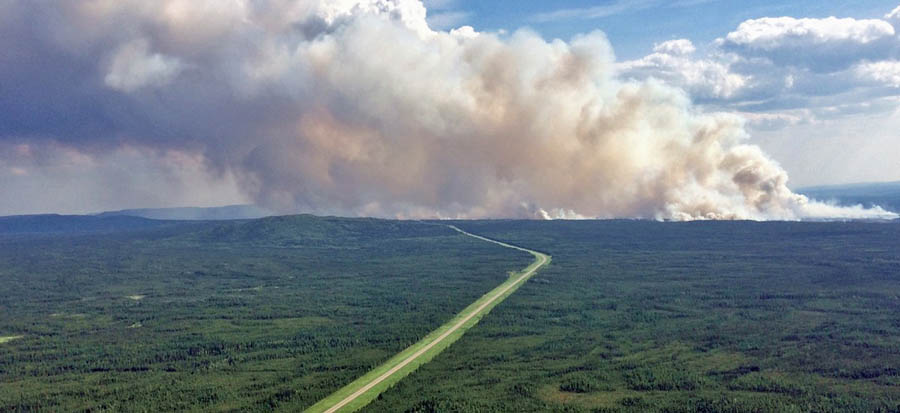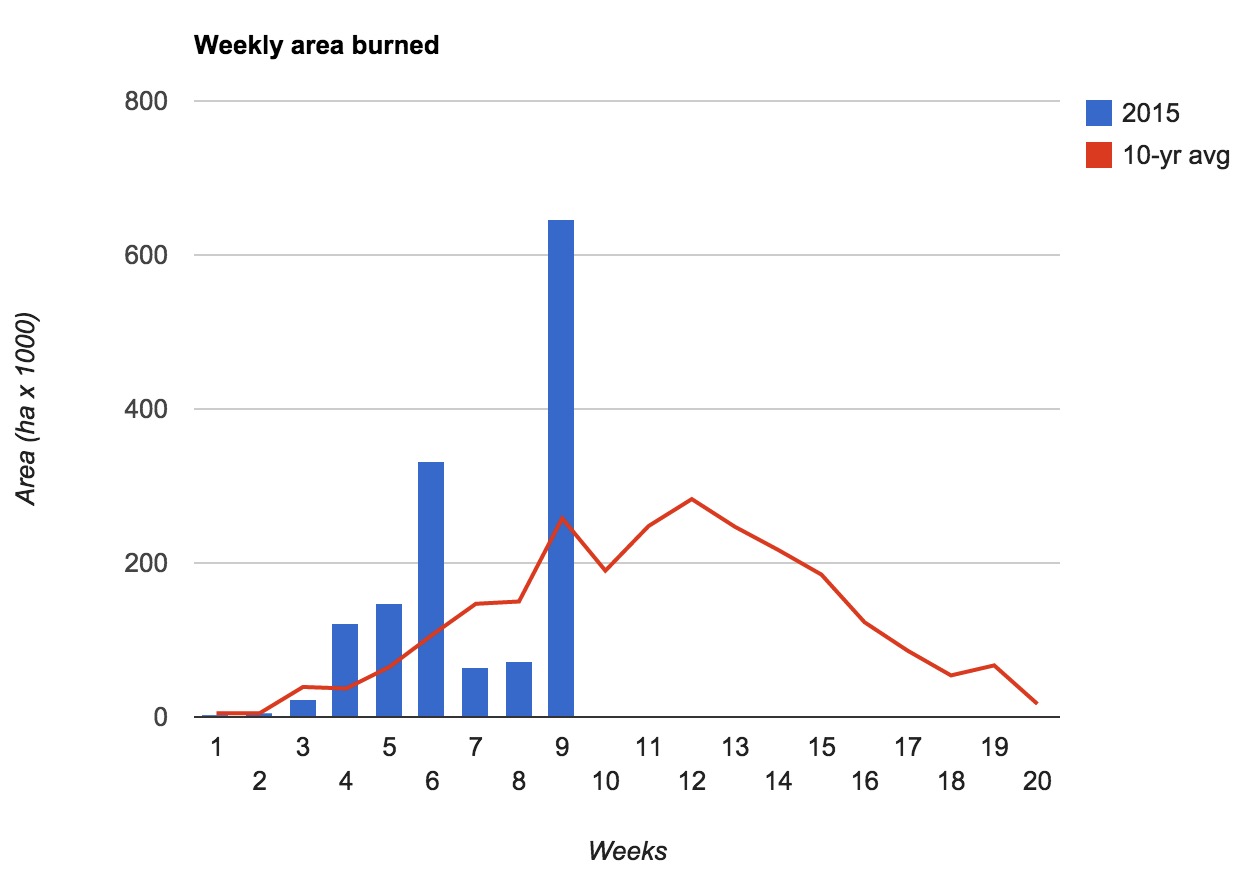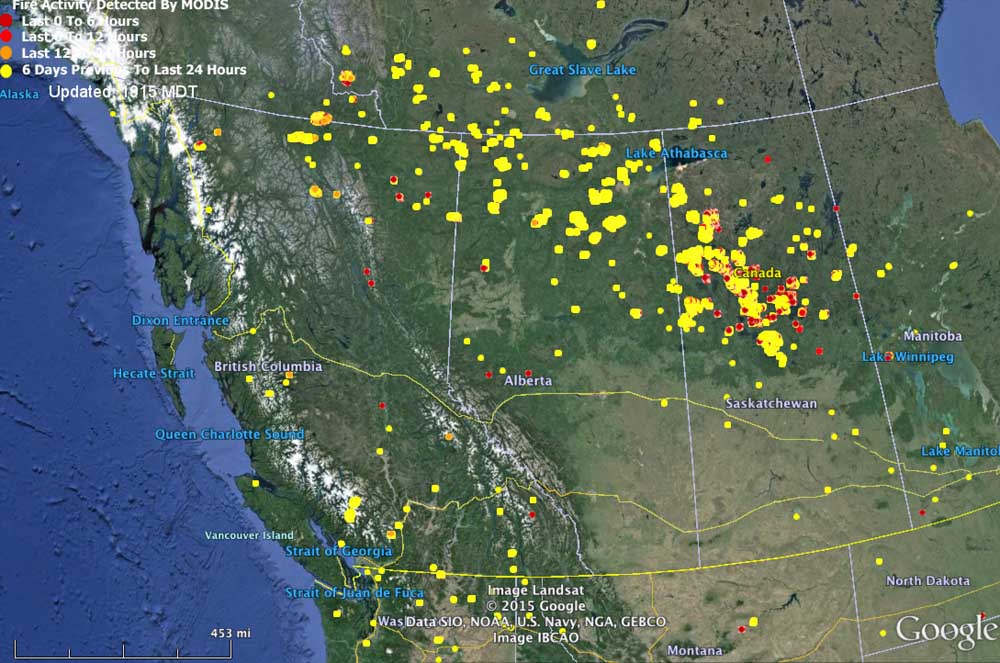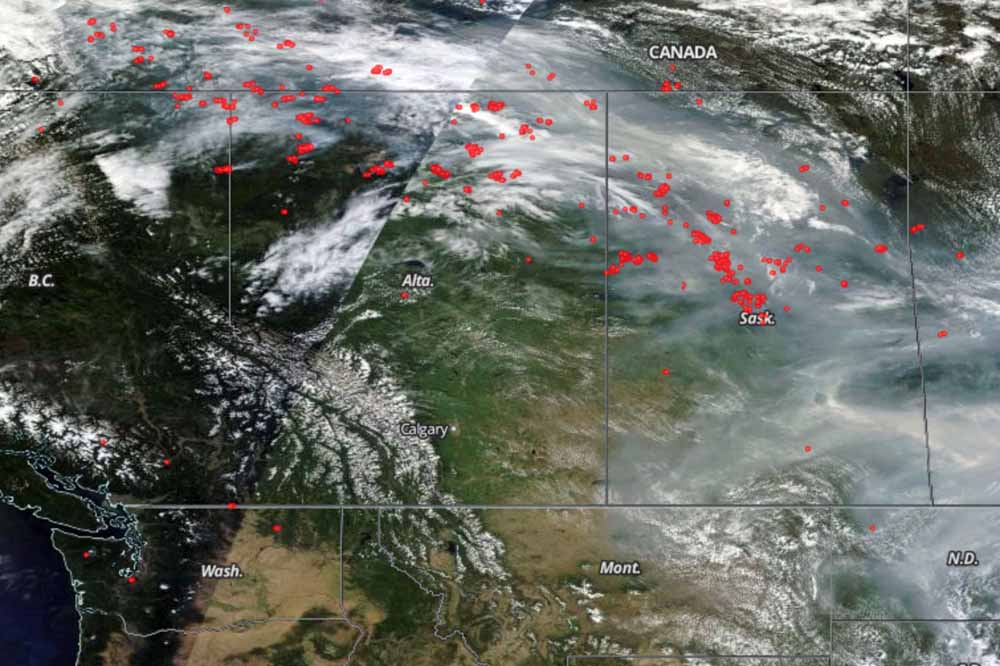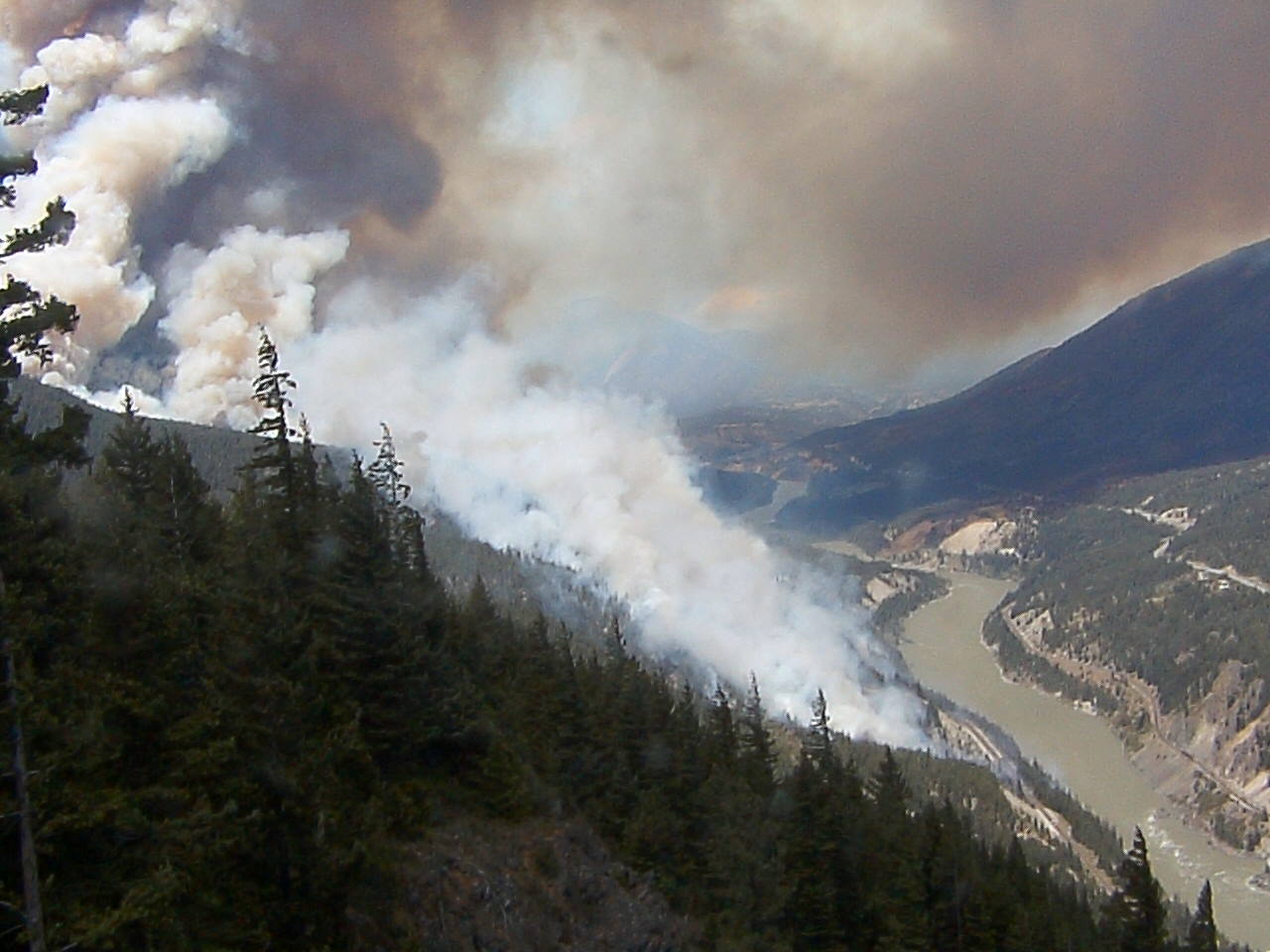
(UPDATED at 3:40 p.m. MT, July 10, 2015)

The map above shows the approximate location of the fire at 5:18 a.m. on June 10 in Excelsior Creek in Jasper National Park in Alberta. The fire in the Maligne Valley is approximately 9 miles (15 km) east of the community of Jasper.
Friday morning it was reported to have burned approximately 5,000 hectares (12,000 acres). Friday afternoon a light rain fell in the area, slowing the spread for a while.
****
(Originally published at 10 a.m. MT, July 10, 2015)
With a wildfire in Jasper National Park in Alberta, Canada spreading rapidly, fire managers evacuated about 82 people, including 52 that were flown off the Skyline trail by helicopter.
The fire was reported at 3:30 p.m. on Thursday approximately 15 km (9 miles) south of the municipality of Jasper. Visitors are being evacuated from the Maligne Valley, the Skyline trail, and Maligne Lake.
Below is an excerpt from the Edmonton Journal:
“We see this as the highest priority fire in the national parks right now,” said David Smith, a fire and vegetation specialist for Jasper who is also serving as incident commander.
According to Smith, the fire is between 200 and 250 hectares [494 to 618 acres] in size, moving at about 15 metres [49 feet] per minute. As temperatures drop and the sun sets, the fire is expected to “settle down” overnight.
Crews are currently fighting the fire by air only as conditions prove too hazardous for ground crews at this time. Despite the high number of fires across the prairies, there are crews slated to arrive in Jasper Friday, before noon.
Though the fire is currently out of control, Smith said people in Jasper need not worry about their safety. At this time there are no park facilities in the way of the fire and because the wind is pushing the fire up to Maligne Lake, Smith said, “the town of Jasper is 100-per-cent safe.”
The video below is a 2-hour time-lapse of the smoke from the fire, shot Thursday from 6 p.m. until 8 p.m., compressed to 30 seconds.
These next photos are general shots of fires and firefighters in Alberta, sourced from the Facebook page for “Alberta Wildfire Info”.





